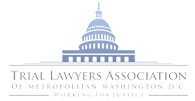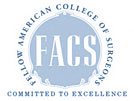On January 31, 2012, a very significant win occurred in the Supreme Court of the State of New York, Appellate Division, Fourth Judicial Department. In an opinion provided in the case of Muhammad v. Fitzpatrick, M.D., the plaintiff, a mother of a child who suffered a severe birth injury, prevailed in a case against the doctor who delivered her child.
This case concerned an Erb’s Palsy injury, which is typically caused by an obstetrician using excessive force to deliver a fetus, and in the process stretching the network of nerve fibers located in the neck and shoulder called the brachial plexus (see diagram).The defense attorney argued that the baby’s injury was due to the “natural forces of labor,” – essentially claiming that the brachial plexus injury was due to the natural forces that are part of the delivery process, not excessive force by the doctor.
Fortunately, this junk science was excluded by the trial judge in Muhammad v. Fitzpatrick, using what is known as the “Frye Doctrine,” which is based upon the case of Frye v. United States, 293 F. 1013. The Frye Doctrine is recognized by courts in the District of Columbia.
The defendants appealed, but fortunately, the appellate court (read the full decision here) affirmed the original decision.
It is important for attorneys representing patients to attack defense theories vigorously that are without merit and prevent these theories from even being argued at trial. Attorneys for patients can use this new case to prevent doctors and hospitals from introducing theories that are without merit at future trials for similar medical malpractice cases.

Dr. Michael M. Wilson is an attorney and a physician who earned his undergraduate degree from the Massachusetts Institute of Technology and his legal and medical degrees from Georgetown University. He has focused in the area of medical malpractice for more than three decades and secured more than $100 million in settlements and verdicts on behalf of clients throughout the country. He is admitted to practice in the District of Columbia and New York as well as the U.S. Court of Appeals for the District of Columbia and the U.S. Supreme Court. He is listed in America’s Top 100 High Stakes Litigators.













